It was time to bid goodbye to the North Island, Dianne, and Tony. Suzanne continued on with us to the South Island where we would spend the rest of our stay. We flew from Wellington to Dunedin where we met our new site team: Chas & Taf.
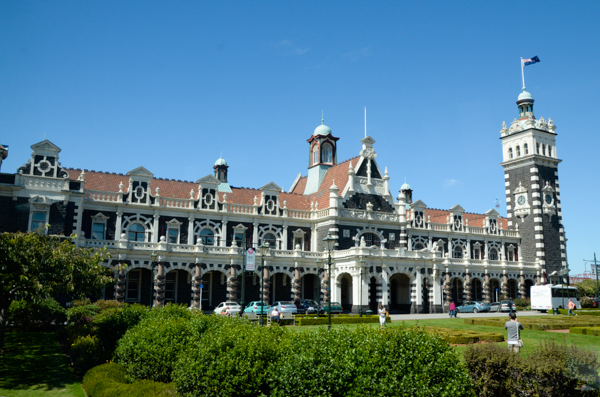
Dunedin (pronounced dun-EE-den), first settled by Scottish emigrants, was the largest city in the country during the Otago Gold Rush years. It is the home of New Zealand's oldest university.
Love or hate the Railway Station -- it is striking.
The University of Otago was welcoming its new freshmen for orientation week and the city was hosting a Cricket World Cup match (NZ lost) at the time of our visit. Because of the crowds our group was split across two hotels.
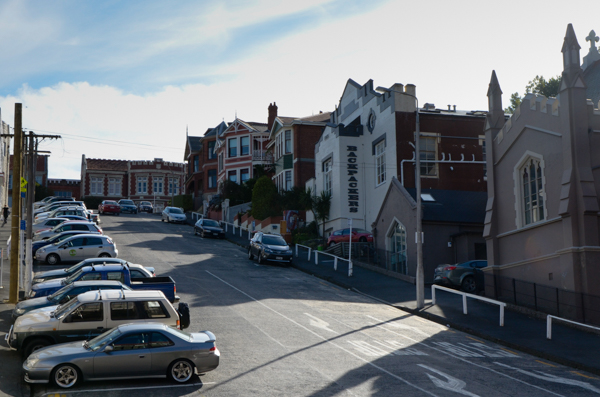
We started our time in Dunedin with an introduction to Southern NZ given by Michael Deaker, a communications and education consultant.
Afterwards we had free time that I used to consult a doctor about my bee-sting reaction. Suzanne located the emergency clinic's address and accompanied me and another traveller who was also experiencing problems. We were seen promptly and the doctor prescribed a strong steroid ointment for the hives that had started appearing. It worked great! This isn't the actual street where the clinic was located, but it is as steep. NZ is not flat.
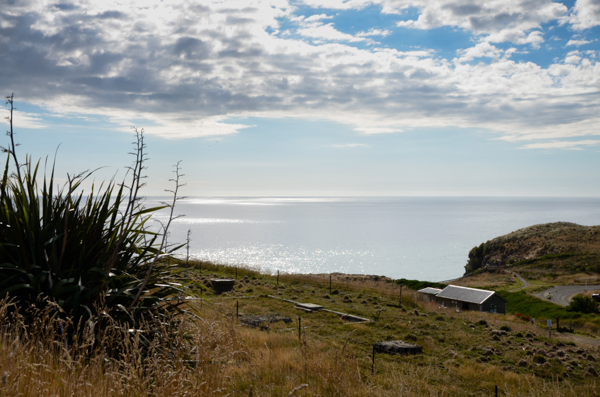
The next day we traveled the scenic Otago Peninsula to the Royal Albatross Centre -- the only mainland nesting site of the Northern Royal Albatross.
The Southern Royal Albatross breeds even farther south. The northern species has wings that are more consistently black.
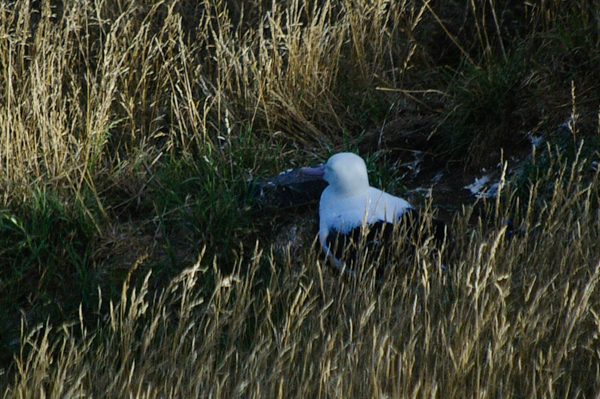
The first egg at Taiaroa Head was recorded around 1920, but it wasn't until 1938 that a chick was successfully raised.
It takes an entire year to raise a chick so the parents nest only every other year IF the chick survives to fledging.
At the time of our visit most eggs had hatched and the birds had entered the "Guard Stage" in which one parent stays with the chick while the other forages.
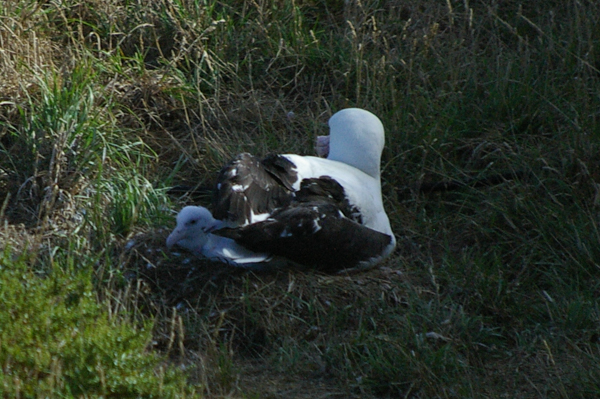
One of the nests was situated so that we could see the chick make an occasional appearance.
The parents will guard the chick through the month of March, but by April both parents will leave the chick to forage. They then return independently to feed it for the next several months.
The Centre monitors the chicks closely and makes strenuous efforts to exclude predators. It also bands its chicks and follows them throughout life.
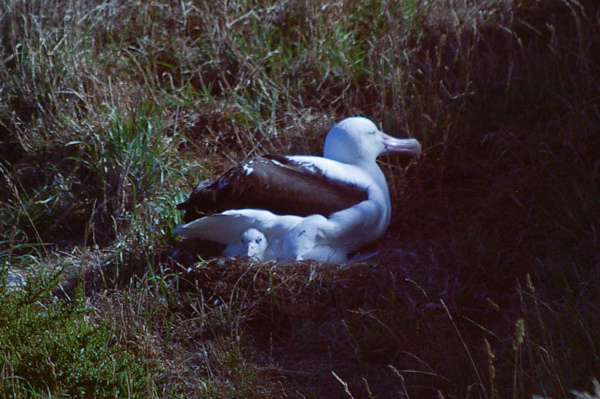
Although we had been told that our viewing time was limited, we were allowed quite a long time to watch the chick, who put on several winsome poses.
Predation and habitat loss are a major threat to this bird and it is currently on the IUCN Red List of endangered species.
The Southern Royal Albatross is not endangered although it is considered threatened because of restricted breeding sites. It hybridizes with the Northern population.
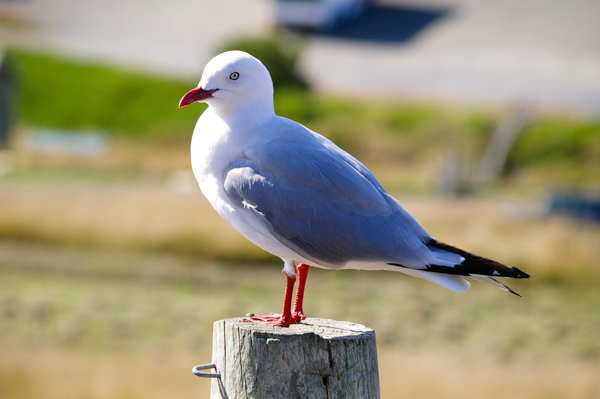
The red-billed gull also breeds at Taiaroa Head. This individual must have been quite vain because s/he posed for quite a long time.
These are the most common gulls in NZ and we saw A LOT of them. Nevertheless they are considered threatened because of recent dramatic population declines.
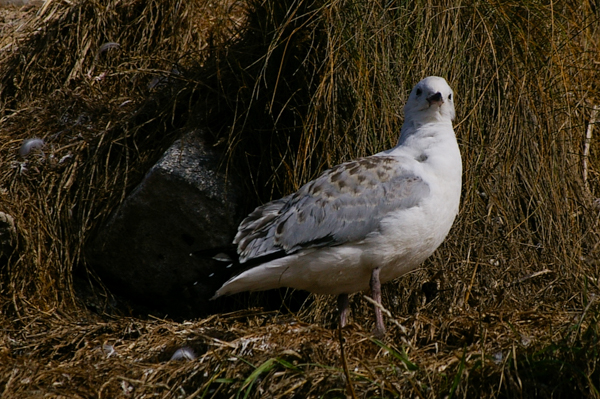
The immature red-billed gull has brown spots in its feathers and hasn't developed the bright red bill & legs.
There was one on the path as we walked from the albatross viewing site to the fort. It kept running away from us instead of flying. The docent said that it was capable of flying, but perhaps it just wasn't the first thing the youngster thought of. When we met a group coming the other way on the path, it finally figured it out and flew away.
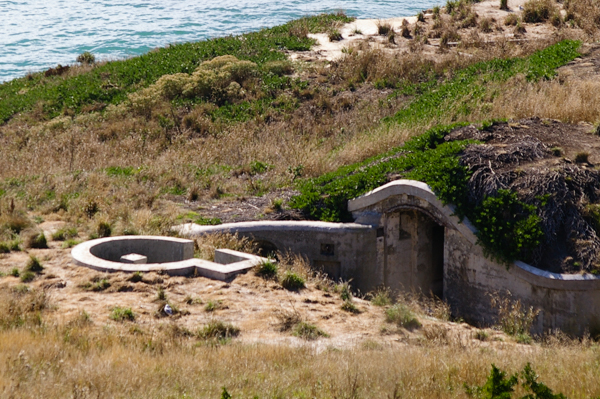
We also visited remnants of an early fortification that includes the only functioning 1886 Armstrong Disappearing Gun (not in the bunker shown here). The gun was installed during the period of the Great Game when it was feared Russians might invade New Zealand.
The gun was restored in 2004, but has never been fired in anger.
Aiming the gun while it was still underground was quite a trick and loading it in a constricted place was also a challenge.
Click your "back" button to return.